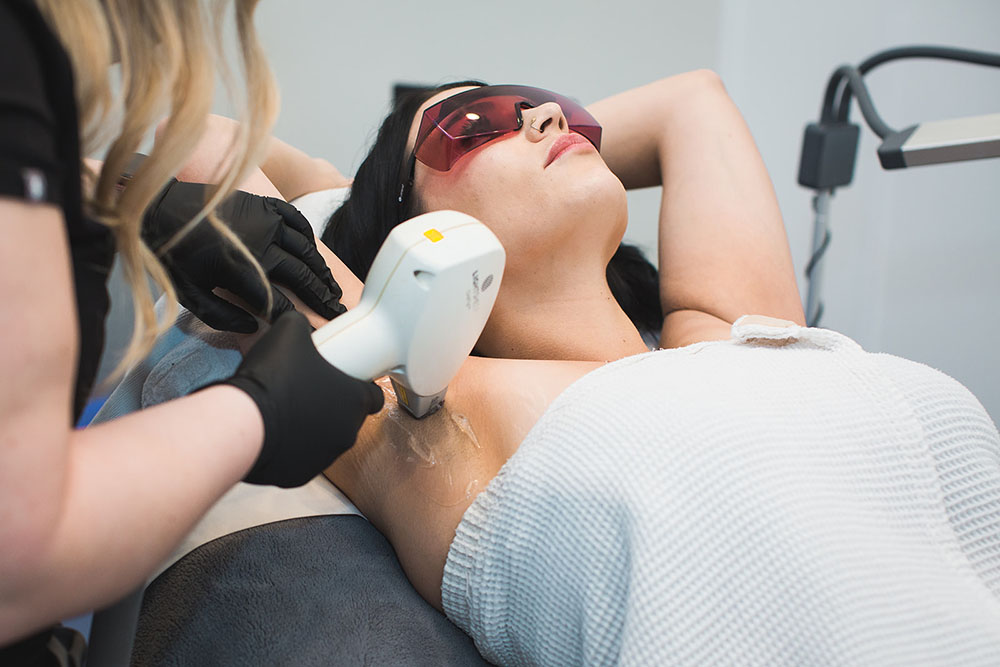1. Understanding Laser Hair Removal
Laser hair removal is a cosmetic procedure that uses concentrated beams of light to remove unwanted hair. The laser targets the pigment in the hair follicles, damaging them to inhibit future hair growth.
What is Laser Hair Removal?
Laser hair removal is a non-invasive procedure that can target hair on various parts of the body, including the face, arms, legs, and bikini area.
How Does Laser Hair Removal Work?
During the treatment, the laser emits pulses of light that are absorbed by the pigment in the hair follicles. This damages the follicles and prevents them from producing new hair.
2. Researching the Right Clinic
Before undergoing Laser Hair Removal in Dubai, it's crucial to research and choose a reputable clinic with qualified practitioners.
Qualifications and Experience of the Practitioners
Ensure that the technicians performing the treatment are trained and certified in laser hair removal procedures.
Technology and Equipment Used
Choose a clinic that uses FDA-approved technology and high-quality equipment for safe and effective treatments.
3. Preparing for Your Treatment
To maximize the effectiveness of laser hair removal and minimize the risk of complications, it's essential to prepare adequately before your appointment.
Avoiding Sun Exposure
Avoid sun exposure and tanning beds for at least two weeks before your treatment, as tanned skin can increase the risk of side effects.
Shaving Before the Treatment
Shave the treatment area the day before your appointment to ensure that the laser can target the hair follicles effectively.
4. Managing Expectations
It's essential to have realistic expectations about the results of laser hair removal and the number of sessions required to achieve them.
Number of Sessions Required
Most people require multiple sessions spaced several weeks apart to achieve the desired results, as hair grows in different stages.
Realistic Outcome Expectations
While laser hair removal can significantly reduce hair growth, it may not result in permanent hair removal for everyone. Some people may experience regrowth over time and require maintenance treatments.
5. During the Treatment
During the laser hair removal procedure, it's essential to communicate with your technician and manage any discomfort effectively.
Sensation and Pain Management
Laser hair removal may cause some discomfort, but most people describe it as tolerable. Your technician can provide numbing creams or cooling devices to minimize any discomfort during the treatment.
Communicating with Your Technician
Don't hesitate to communicate with your technician during the treatment if you experience any discomfort or have questions about the process.
6. Post-Treatment Care
After laser hair removal, it's crucial to follow a proper skincare routine and avoid irritants to promote healing and minimize the risk of complications.
Skin Care Routine
Apply soothing creams or aloe vera gel to the treated area to reduce redness and inflammation. Avoid exposing the treated area to hot water or harsh chemicals for a few days after the treatment.
Avoiding Irritants
Avoid activities that may irritate the skin, such as swimming in chlorinated pools or using harsh skincare products, for at least 48 hours after your treatment.
7. Patience is Key
Patience is essential when undergoing laser hair removal, as results may not be immediate, and multiple sessions are usually required to achieve the desired outcome.
Understanding the Hair Growth Cycle
Hair grows in cycles, and laser hair removal is most effective when targeting hair in the active growth phase. Multiple sessions spaced several weeks apart are necessary to target hair in different stages of growth effectively.
Allowing Time Between Sessions
Give your skin time to heal between sessions, and avoid scheduling treatments too close together to minimize the risk of side effects.
8. Follow-Up Sessions
Follow-up sessions are essential for maintaining the results of laser hair removal and addressing any regrowth or missed areas.
Importance of Follow-Up Sessions
Your technician will assess your progress after each session and recommend additional treatments as needed to achieve the best results.
Adjustments in Treatment
Depending on your response to the treatment, your technician may adjust the settings or technique to optimize the results and minimize side effects.
9. Potential Risks and Side Effects
While laser hair removal is generally safe, there are potential risks and side effects to be aware of, especially for individuals with certain skin types or medical conditions.
Temporary Discomfort
Common side effects of laser hair removal include redness, swelling, and temporary skin irritation, which usually resolve within a few days after the treatment.
Potential Risks for Certain Skin Types
People with darker skin tones or a history of skin conditions may be at a higher risk of experiencing pigmentation changes or other complications from laser hair removal. It's essential to consult with a qualified practitioner to assess your suitability for the treatment.
10. Maintaining Results
To prolong the results of laser hair removal and minimize regrowth, it's essential to follow a consistent maintenance routine and avoid behaviors that can stimulate hair growth.
Follow-Up Maintenance
After completing your initial series of treatments, schedule periodic maintenance sessions as recommended by your technician to target any regrowth and maintain smooth, hair-free skin.
Long-Term Care Tips
Practice good skincare habits, such as exfoliating regularly and moisturizing the skin, to keep it healthy and prevent ingrown hairs. Avoid plucking or waxing between treatments, as this can disrupt the hair growth cycle and interfere with the effectiveness of laser hair removal.
In conclusion, laser hair removal can be an effective solution for achieving smooth, hair-free skin, but success requires careful preparation, realistic expectations, and consistent follow-up care. By following these top 10 tips, you can maximize the effectiveness of your treatment and enjoy long-lasting results.





Comments